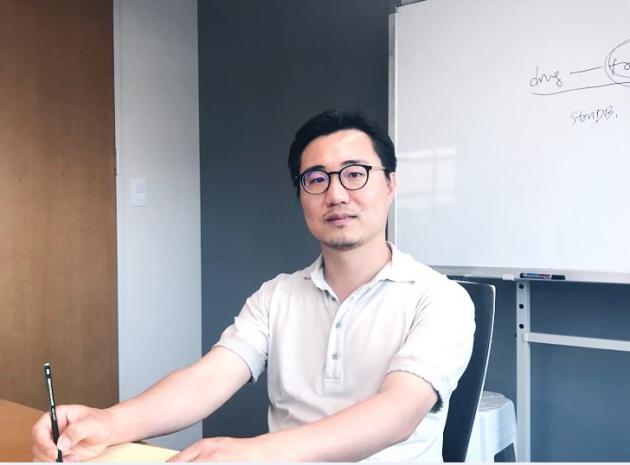Artificial intelligence (AI)-based drug discovery is now the hottest keyword in the biomedical sphere with more than 70 firms entering the field this year alone.
Standigm, an AI-based drug discovery startup founded in 2015, has aimed to use its self-developed technology and long-standing expertise to produce real-life results and stand out from the crowd.
The firm is now preparing to break the news of the results of animal trials on its nonalcoholic steatohepatitis (NASH) therapies next month. NASH is a type of nonalcoholic fatty liver disease (NAFLD) wherein fat builds up in the liver.
Founded by three Ph.D. holders from Samsung Advanced Institute of Technology, Standigm has developed several AI models for drug repositioning, drug target identification, and literature mining using various algorithms such as varying artificial neural networks, decision tree, gradient boosting, and natural language processing.
The company uses AI to find patterns in biomedical data to save time and cost in drug development, eliminating the uncertainty in the drug discovery process and focusing on candidates that are likely to succeed. The firm also boasts a database used to store and maintain knowledge and public information.
Standigm CEO Kim Jin-han said he co-founded the firm because of deficiencies in the traditional method of developing new drugs, in an interview with Korea Biomedical Review.

On average it takes more than 10 years, and about 1 trillion won ($890 million) to develop a new therapy. Using deep learning and various algorithms can help shorten time to cut fees to a third of traditional costs - if the deep learning programs are ready to go – in a couple of days.
“Although it depends on the stage, traditional methods of drug developments are somewhat inefficient. AI-based drug discovery increases efficiency by at least 10-fold,” Kim said.
The CEO got his bachelors and masters at Seoul National University in applied chemistry and artificial intelligence and his Ph.D. in AI at The University of Edinburgh studying under Geoffrey Hinton - whom he calls the “father of deep learning.”
With his background in developing algorithms for a variety of fields, including DNA damage repair mechanisms, Kim worked at the Samsung Advanced Institute of Technology for three years before creating the startup.
“I founded Standigm in May 2015 because I wanted to pursue the field of my interest, which was in biology,” Kim recalled. “At the time the project I was working on at SAIT came to a halt, and I didn’t want to work for a salary the rest of my life.”
When he first established the firm in 2015, however, AI-based drug discovery was neither well-known nor well-received. “Some people didn’t believe it at the time, but we pursued it because we believed there was a better way to develop new drugs,” he said.
The traditional method of drug discovery involves getting a “clue” from research papers or through large-scale screening trials – requiring both extensive time and money. Standigm aimed to change the paradigm of drug discovery by outsourcing the process, not to humans but an intelligent machine.
“The human body is a complex system. Drug discovery is a problem of biology since the drug is administered into the human body. Understanding the human body is a necessity – but because it’s a complex system, we believed that smart devices could solve the problem better than people can,” the CEO said.
AI systems can process the complicated process of the human body and quickly and coherently catch the patterns of the biological mechanisms.
Standigm touts eight AI modules that respectively act to predict various aspects of a drug’s efficacy on a particular disease, leading to drug discovery. One module suggests the possible indications of a drug that has effects on other illnesses. The deep learning programs learn the gene expression patterns and then pinpoints on which diseases they have the most significant impact.
The deciding factor of Standigm’s and other drug discovery firms, however, hinges on whether they can produce a real-life, commercial drug.
In this regard, Standigm expects good news next month as it has for five NASH drugs in animal trials in Japan with a local contract research organization (CRO). It then will roll out the results of other animal studies going on in various disease fields such as cancer and diseases caused by mitochondrial abnormalities.
The firm is also targeting patents for its discoveries and is aiming to attain the status of the first AI-based drug discovery firm to win recognition as the producer of real-life results.
“If the trials go as expected, we will be able to transfer the therapies physically. It won’t be just an intangible object made on a computer, but a result from trials on living animals,” Kim said.
Standigm currently has more than 30 therapies in development, including five NASH therapies in animal trials. The firm is also developing treatments for autism in partnership with the Korea Institute of Science and Technology.
“The cause of autism is not yet known, and, as far as I’m aware, the cure has not been discovered yet. We are working to develop therapies that at least alleviate the symptoms of the disease,” Kim said.
Kim stressed that Standigm would produce actual, tangible results soon and obtain patents for them, eventually creating self-developed pipelines.
“Our short-term goals is to have two or three pipelines and grow as a revenue-creating global pharmaceutical firm,” he said. Our final goal is to create therapies that give greater benefits to consumers and pharmaceutical firms.”

